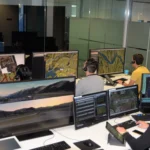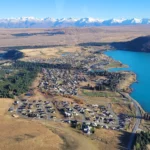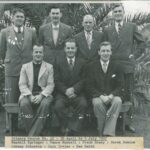AirShare trialled across Aotearoa’s skies

George Ridd
AirShare Product Manager
AirShare, the uncrewed traffic management (UTM) system developed by Airways has been the cornerstone of drone management in New Zealand airspace since 2014. Ten years on, we’re taking a significant step forward to support streamlined and safe access to low level airspace for all uncrewed aircraft – trialling AirShare through a network of New Zealand organisations.
The trial will run for a minimum of three months and is part of Airways’ and AirShare’s ongoing commitment to advancing the uncrewed aircraft (UA) sector in New Zealand. By deploying a trial of AirShare in unattended aerodromes and for large landowners across New Zealand, in all types of airspace, our aim is to prove the benefits of UTM while also capturing learnings through real-world use of AirShare by a range of industry organisations.
Along the way, we’re gathering information and data to inform and facilitate future decision-making around UA operations. For trial participants, they’re gaining greater situational awareness of drones operating around their airspace, stronger risk mitigation, and enhanced collaboration – all of which is leading to increased safety for all airspace users.
Let’s dive into a few of the trial participants, and how the deployment of AirShare is working for them.
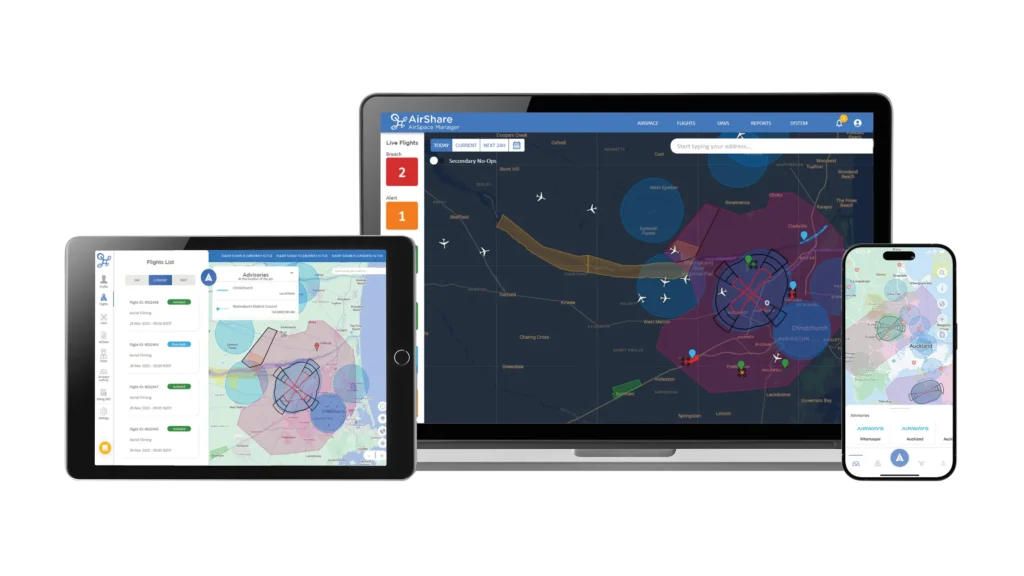
Lyttelton Port Company
Lyttelton Port Company (LPC), the gateway port of the South Island is the first port in New Zealand to integrate AirShare as part of the trial – the key motivation being to increase safety and streamline UA flight approvals.
AirShare is a function incorporated into LPC’s existing authorisation and permit-to-work processes. UA operations aligned to CAA’s Part 101 rules are steadily increasing at the port, as LPC staff UA pilots deploy UA to gather data around asset condition assessments, monitor environmental conditions, and collect images of port activities. Increasing use of UA at the port has identified potential challenges around effective safety risk management, especially around dedicated no-fly areas within the port’s boundaries and other work activities underway at the port.
AirShare enables LPC’s UA pilots to plan and lodge flight plans as part of their work processes, and also enhances the Permit Office’s ability to monitor UA flights logged within LPC’s airspace and any potential overlapping work that may be underway at the same time. Given that the port is a controlled area, LPC does not permit recreational UA flights over its operations.
Tekapo Aerodrome
The Tekapo aerodrome, or Lake Tekapo Airport is privately owned by Air Safaris which operates a fleet of six aircraft and is one of New Zealand’s largest scenic flight airlines. Air Safaris has gained recognition over the years for their contribution to air safety in the region, and are now further enhancing safety for pilots and drone operators with AirShare deployed to manage and monitor drone activities around the aerodrome.
AirSafaris Safety Manager Justin Sturrock says: “We often work with drone operators around Lake Tekapo. The use of the AirShare UTM will help us to effectively monitor and manage drone activities around the aerodrome – we strongly encourage all qualified drone pilots to log their flights with AirShare which will support safe operations, and the safety of all airspace users.”
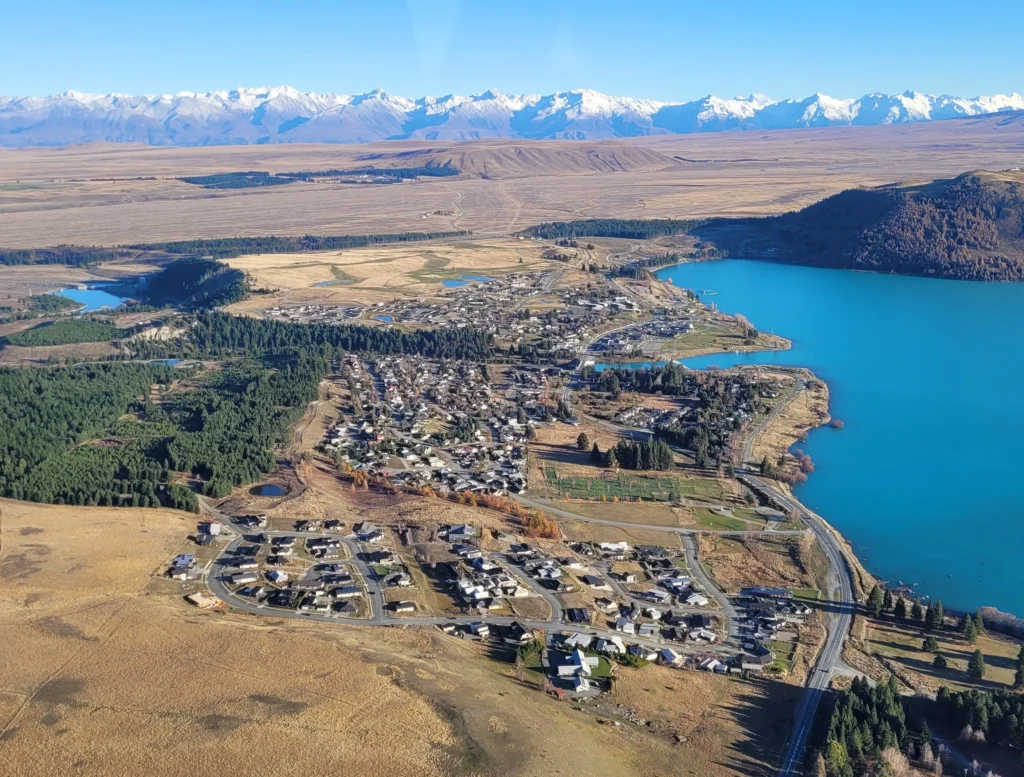
Mechanics Bay Aerodrome
Mechanics Bay, a reclaimed bay in the Waitemata Harbour in Auckland, was the site of New Zealand’s first international airport – back in a time when passengers travelled by flying boat and landed offshore. It was the centre of international aviation for New Zealand until the 1960s when Auckland International Airport was constructed.
The Mechanics Bay aerodrome continues to operate today, with a heliport which is the base for a number of helicopter operations including Westpac Rescue and Eagleflight Aviation. Safety is paramount for the aerodrome, with increased risk from drone operations. The deployment of AirShare helps to reduce the risk of conflicts between helicopters and drones, and provides increased situational awareness of drone operations in the area through AirShare’s interactive flight map.
All drone pilots who hold an approved qualification (as per the Civil Aviation Rules) are now being encouraged to log their flights in AirShare to gain approval to fly within 4km of the Mechanics Bay aerodrome.
Collaboration is key
The feedback gathered from AirShare trial participants will be invaluable in refining the AirShare UTM system and shaping the future of drone integration in New Zealand’s airspace. Collaboration between the AirShare team, trial participants and drone pilots is critical to the success of the trial – we’re looking forward to hearing feedback from participating organisations and drone operators, and will be sharing learnings with key New Zealand aviation stakeholders such as the Civil Aviation Authority and the Ministry of Transport, to help inform and future decisions to be made around UA operations in New Zealand.
In another significant trial underway, AirShare has also been deployed at the Tāwhaki National Aerospace Centre at Kaitorete Spit near Christchurch – part of a collaboration agreement to not only enhance safety, but to help advance New Zealand’s capabilities as a global leader in airspace integration. It’s expected that this trial will help to inform what’s required from a modern airspace system, to realise the benefits of advanced aviation in New Zealand and worldwide.
The journey to safer skies in low level airspace
The AirShare trial involving a range of New Zealand organisations represents a significant milestone in the journey towards safer and more efficient airspace management. By enhancing situational awareness, streamlining flight authorisation processes and fostering collaboration among stakeholders, AirShare is setting a new standard for uncrewed traffic management. This trial not only benefits drone pilots and the aviation sector but also contributes to the safety and well-being of the general public, ensuring that the skies remain safe for all.
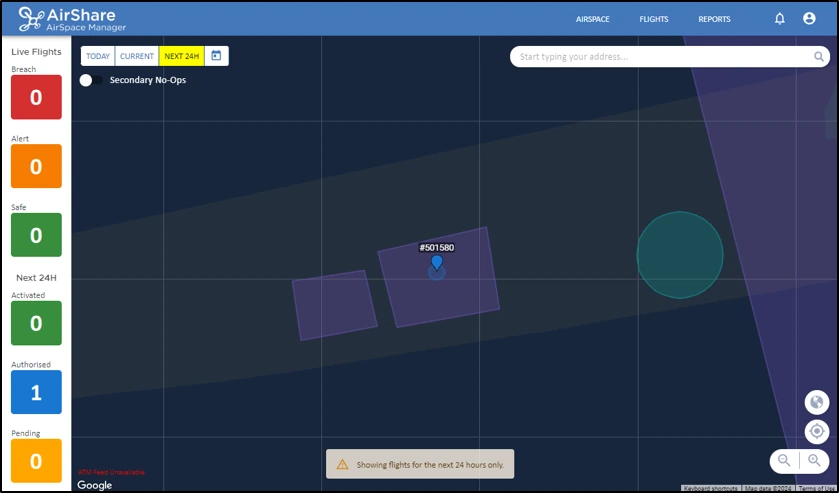
About the author
George Ridd
AirShare Product Manager, Airways International
George is the Product Manager for AirShare, Airways International’s uncrewed traffic management system. He has over 18 years of aviation industry experience in engineering, asset management, strategy and product management. He has a strong record of product management, project delivery, process improvement and delivering innovative solutions that meet stakeholders’ needs. George holds a Bachelor of Engineering (Hons) in Information Engineering.


